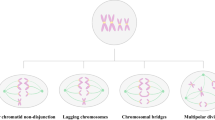Abstract
Purpose
To detect which factors influence decision-making among pregnant FMR1 premutation carriers regarding the preferred mode of genetic diagnosis: IVF-PGT-M (in vitro fertilization with preimplantation genetic testing for monogenic gene diseases), or CVS (chorionic villus sampling), or AC (amniocentesis) after spontaneous conception.
Methods
In Israel FMR1 premutation preconception genetic screening is offered, free of charge, to every woman in her reproductive years. FMR1 premutation carriers with ≥ 70 CGG repeats, or a history of FXS offspring, are offered IVF-PGT-M. This is a historical cohort study including all pregnant FMR1 premutation carriers who underwent prenatal diagnosis between the years 2011 and 2016 at a tertiary medical center. Data were collected from electronic charts and through phone interviews.
Results
One hundred seventy-five women with high-risk pregnancies who were offered IVF-PGT-M were evaluated. In 37 pregnancies (21%), the women decided to undergo IVF-PGT-M. Using the generalized estimating equations (GEE) statistical method including seven parameters, we found that previous termination of pregnancy due to FXS and advanced woman’s age were significantly associated with making the decision to undergo IVF-PGT-M. Previously failed IVF was the most significant parameter in a woman’s decision not to undergo IVF-PGT-M.
Conclusion
The most dominant factor affecting the decision of FMR1 premutation carriers to choose spontaneous conception with prenatal diagnosis versus IVF-PGT-M is a previous experience of failed IVF treatments. Women whose IVF treatments failed in the past tended to try to conceive naturally and later, during the course of the pregnancy, perform CVS or AC. Conversely, women who previously experienced a termination of pregnancy (TOP) due to an affected fetus, and older women, preferred to undergo IVF-PGT-M procedures.

Similar content being viewed by others
References
Wittenberger MD, Hagerman RJ, Sherman SL, McConkie-Rosell A, Welt CK, Rebar RW, et al. The FMR1 premutation and reproduction. Fertil Steril. 2007;87:456–65.
Nolin SL, Glicksman A, Ding X, et al. Fragile X analysis of 1112 natal samples from 1991 to 2010. Prenat Diagn. 2011;31(10):925 931–2011.
Tsafrir A, Altarescu G, Margalioth E, Brooks B, Renbaum P, Levy-Lahad E, et al. PGT-M for fragile X syndrome: ovarian function is the main determinant of success. Hum Reprod. 2010;25(10):2629–36.
Jin P, Warren ST. Understanding the molecular basis of fragile X syndrome. Hum Mol Genet. 2000;9:901–8.
Hoyos LR, Thakur M. Fragile X premutation in women: recognizing the health challenges beyond primary ovarian insufficiency. J Assist Reprod Genet. 2017;34(3):315–23.
Visootsak J, Warren ST, Anido A, Graham JM. Fragile X syndrome: an update for the primary pediatrician. Clin Pediatr. 2005;44:371–81.
Fu YH, Kuhl DP, Pizzuti A, et al. Variation of the CGG repeat at the fragile X site results in genetic instability: resolution of the Sherman paradox. Cell. 1991;67:1047–58.
Berkenstadt M, Ries-Levavi L, Cuckle H, Peleg L, Barkai G. Preconceptional and prenatal screening for fragile X syndrome: experience with 40,000 tests. Prenat Diagn. 2007;27(11):991–4.
Sherman S, Pletcher BA, Driscoll DA. Fragile X syndrome: diagnostic and carrier testing. Genet Med. 2005;7:584–7.
Spath MA, Feuth TB, Allen EG, Smits APT, Yntema HG, van Kessel AG, et al. Intra-individual stability over time of standardized anti-Mullerian hormone in FMR1 premutation carriers. Hum Reprod. 2011;26:2185–91.
Rohr J, Allen EG, Charen K, Giles J, He W, Dominguez C, et al. Anti-Mullerian hormone indicates early ovarian decline in fragile X mental retardation (FMR1) premutation carriers: a preliminary study. Hum Reprod. 2008;23:1220–5.
Welt CK, Smith PC, Taylor AE. Evidence of early ovarian aging in fragile X premutation carriers. J Clin Endocrinol Metab. 2004;89:4569–74.
Martin JR, Arici A. Fragile X and reproduction. Curr Opin Obstet Gynecol. 2008;20:216–20.
Fernández RM, Peciña A, Lozano-Arana MD, Sánchez B, García-Lozano JC, Borrego S, et al. Clinical and technical overview of preimplantation genetic diagnosis for fragile X syndrome: experience at the University Hospital Virgen del Rocio in Spain. Biomed Res Int. 2015. https://doi.org/10.1155/2015/965839.
Feldman B, Aizer A, Brengauz M, Dotan K, Levron J, Schiff E, et al. Pre-implantation genetic diagnosis – should we use ICSI for all? J Assist Reprod Genet. 2017;34(9):1179–83.
M M, Naiman T, Yosef DB, Carmon A, Mey-Raz N, Amit A, et al. Preimplantation genetic diagnosis for fragile X syndrome using multiplex nested PCR. Reprod BioMed Online. 2007;14(4):515–21.
Ferraretti AP, La Marca A, Fauser BC, Tarlatzis B, Nargund G, Gianaroli L. ESHRE working group on Poor Ovarian Response Definition. ESHRE consensus on the definition of ‘poor response’ to ovarian stimulation to in vitro fertilization: the Bologna criteria. Hum Reprod. 2011;26(7):1616–24.
Raspberry KA, Skinner D. Negotiating desires and options: how mothers who carry the fragile X gene experience reproductive decisions. Soc Sci Med. 2011;72(6):992–8.
Kerr A, Cunningham-Burley S. On ambivalence and risk: reflexive modernity and the new human genetics. Sociology. 2000;34(2):283–304.
Lemke T. Disposition and determinism genetic diagnostics in risk society. Sociol Rev. 2004;52(4):550–66.
Belanger D. Indispensable sons: negotiating reproductive desires in rural Vietnam. Gend Place Cult. 2006;13(3):251–65.
Xuncia M, Badenas C, Dominguez M, Rodriguez-Revenga L, Madrigal I, Jimenez L, et al. Fragile X syndrome prenatal diagnosis: prenatal attitudes and reproductive responses. Reprod BioMed Online. 2010;21(4):560–5.
Tsafrir A, Altarescu G, Margalioth E, Brooks B, Renbaum P, Levy-Lahad E, et al. PGD for fragile X syndrome: ovarian function is the main determinant of success. Hum Reprod. 2010;25(10):2629–36.
Man L, Lekovich J, Rosenwaks Z, Gerhardt J. Fragile X-associated diminished ovarian reserve and primary ovarian insufficiency from molecular mechanisms to clinical manifestations. Front Mol Neurosci. 2017;12(10):290.
Elizur SE, Lebovitz O, Derech-Haim S, Dratviman-Storobinsky O, Feldman B, Dor J, et al. Elevated levels of FMR1 mRNA in granulosa cells are associated with low ovarian reserve in FMR1 premutation carriers. PLoS One. 2014;9(8):e105121.
Elizur SE, Aslan D, Shulman A, Weisz B, Bider D, Dor J. Modified natural cycle using GnRH antagonist can be an optional treatment in poor responders undergoing IVF. J Assist Reprod Genet. 2005;22(2):75–9.
Acknowledgments
This work was supported by The Azrieli Foundation Canada-Israel.
Author information
Authors and Affiliations
Corresponding author
Rights and permissions
About this article
Cite this article
Haham, L.M., Avrahami, I., Domniz, N. et al. Preimplantation genetic diagnosis versus prenatal diagnosis—decision-making among pregnant FMR1 premutation carriers. J Assist Reprod Genet 35, 2071–2075 (2018). https://doi.org/10.1007/s10815-018-1293-3
Received:
Accepted:
Published:
Issue Date:
DOI: https://doi.org/10.1007/s10815-018-1293-3




